How campus protests of the past may inform pro-Palestinian student demonstrations
About 56 years ago, Columbia University's Hamilton Hall was overrun and occupied by student protesters calling for an end to what students called racist policies that displaced communities around the school's campus.
It was one of several campus buildings occupied by protesters in dayslong demonstrations. Students setting up food pantries for protesters, hordes of students and faculty covering campus grounds or students flying flags out of Hamilton Hall windows in the 1960s are some of the familiar scenes echoed in today's protests.
"Demonstrate against the repression and Columbia's racism," read a 1968 flyer listing planned rallies, speakers and musical performances in a schedule of protest activities.
Today, pro-Palestinian student protesters are taking notes from the past -- not just at Columbia, but around the country.
Students have adopted the building takeovers from the Civil Rights Movement and Vietnam War protests, the calls for university divestment from South African apartheid in the 1980s, the encampments of the Occupy Wall Street movement, and more.
"College campuses are the place in American society where really a lot of debates about crucial issues at the moment take place," said Jonathan Fansmith, senior vice president of government relations at the American Council on Education.
He continued, "It's really, in many ways, what colleges and universities are built for -- is to have these intense, often very passionate debates about the key issues of the time."
The movements of the past were polarizing, as are those of today, taking college campuses by storm and mirrored by today's mass arrests, police action against protesters and altercations between counterdemonstrators and protesters.
Keith E. Whittington, a professor of politics at Princeton University, said that universities are meant to be places to explore controversial topics, acting as pillars of free speech.
"We've given a lot more protection to students to be able to engage in free speech than we might have found a hundred years ago," said Whittington. "Not only doing the heavy lifting of scholarly research and teaching, but also being places where people can debate and engage about how they may personally feel about controversial political and social issues of the day."
As demonstrators protest Israel's war in Gaza and the death toll mounts in the region, protesters are calling for their universities to take action and divest from companies or groups that contribute to Israel's military operations.
Here's a look at the past moments that are reflected in today's protests:
The Civil Rights Movement
In the 1960s, college students led sit-ins guided by the pillars of civil disobedience and nonviolent direct action to protest segregation.
Integrated groups of Black and white student protesters would take over segregated lunch counters, prompting backlash from counterdemonstrators who would harass and assault protesters.
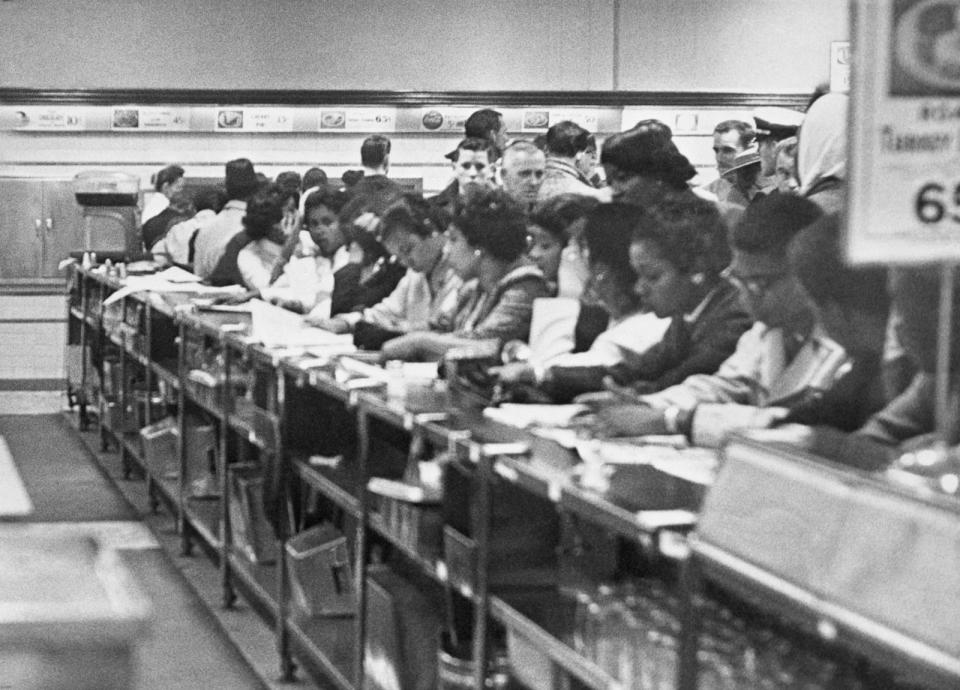
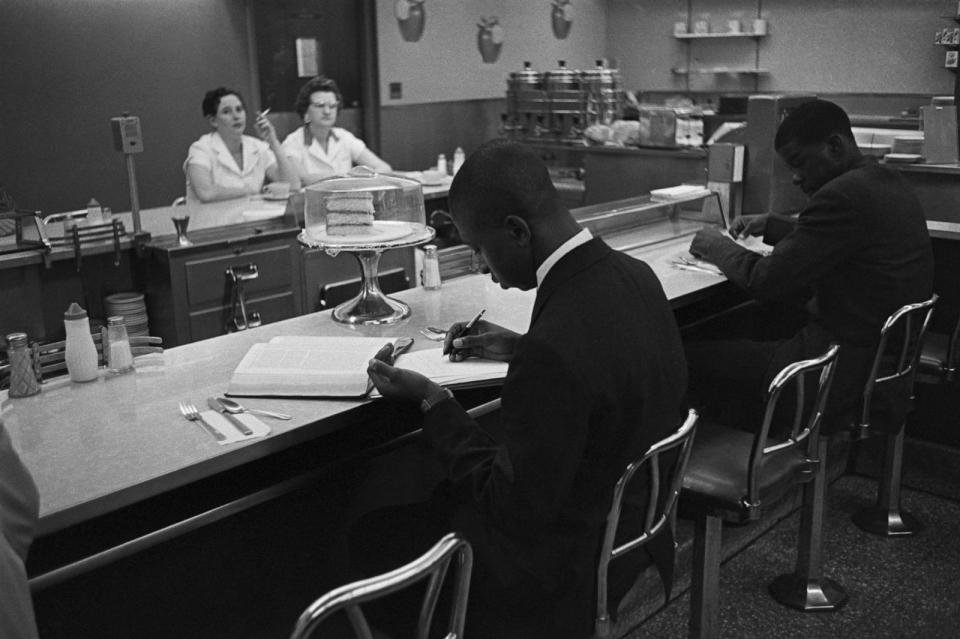
These protests spread to more than 50 cities nationwide, involving tens of thousands of students and leading to hundreds of arrests for their support of the Civil Rights Movement, according to the Civil Rights and Labor History Consortium at University of Washington.
This movement led to the formation of the Student Nonviolent Coordinating Committee, a student-led civil rights movement with chapters in states across the South that participated in marches, Freedom Rides, and more acts of protest.
SNCC was not dissimilar from the growing leaders of today's anti-war movements, including Students for Justice in Palestine and Jewish Voice for Peace.
In April 1968, anti-racist protesters and anti-war protesters took over Columbia's Hamilton Hall, as well as several other buildings.
These protests were in part to protest the university's construction of an athletic complex that "effectively stole the land from the predominantly Black community that had traditionally used Morningside Park," according to Columbia University Libraries.
Some students were also protesting against military recruitment on campus.
The occupation of Hamilton Hall led to one of the largest mass arrests in New York City history. Police made more than 700 arrests, according to Columbia University.
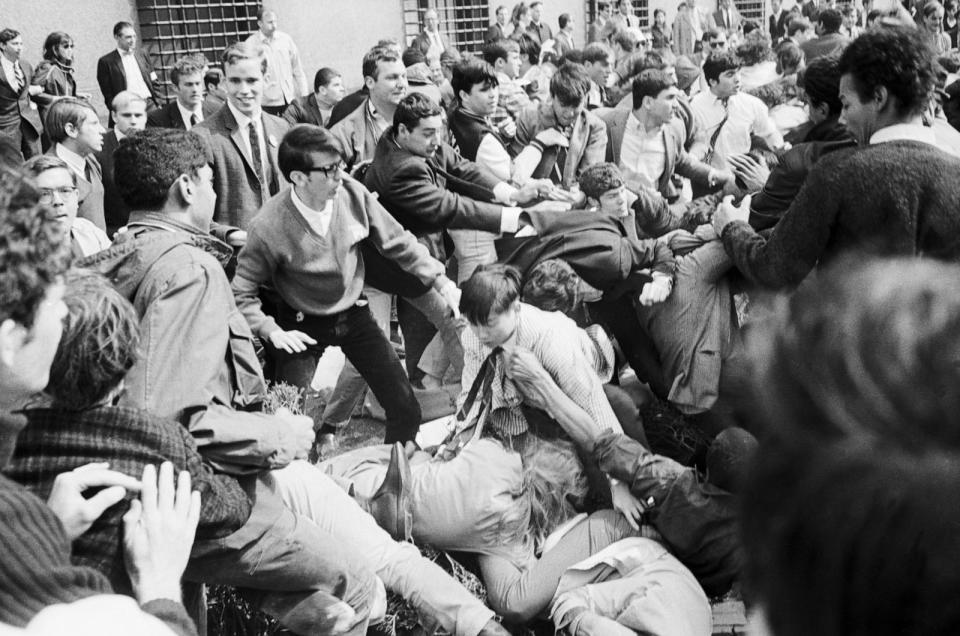
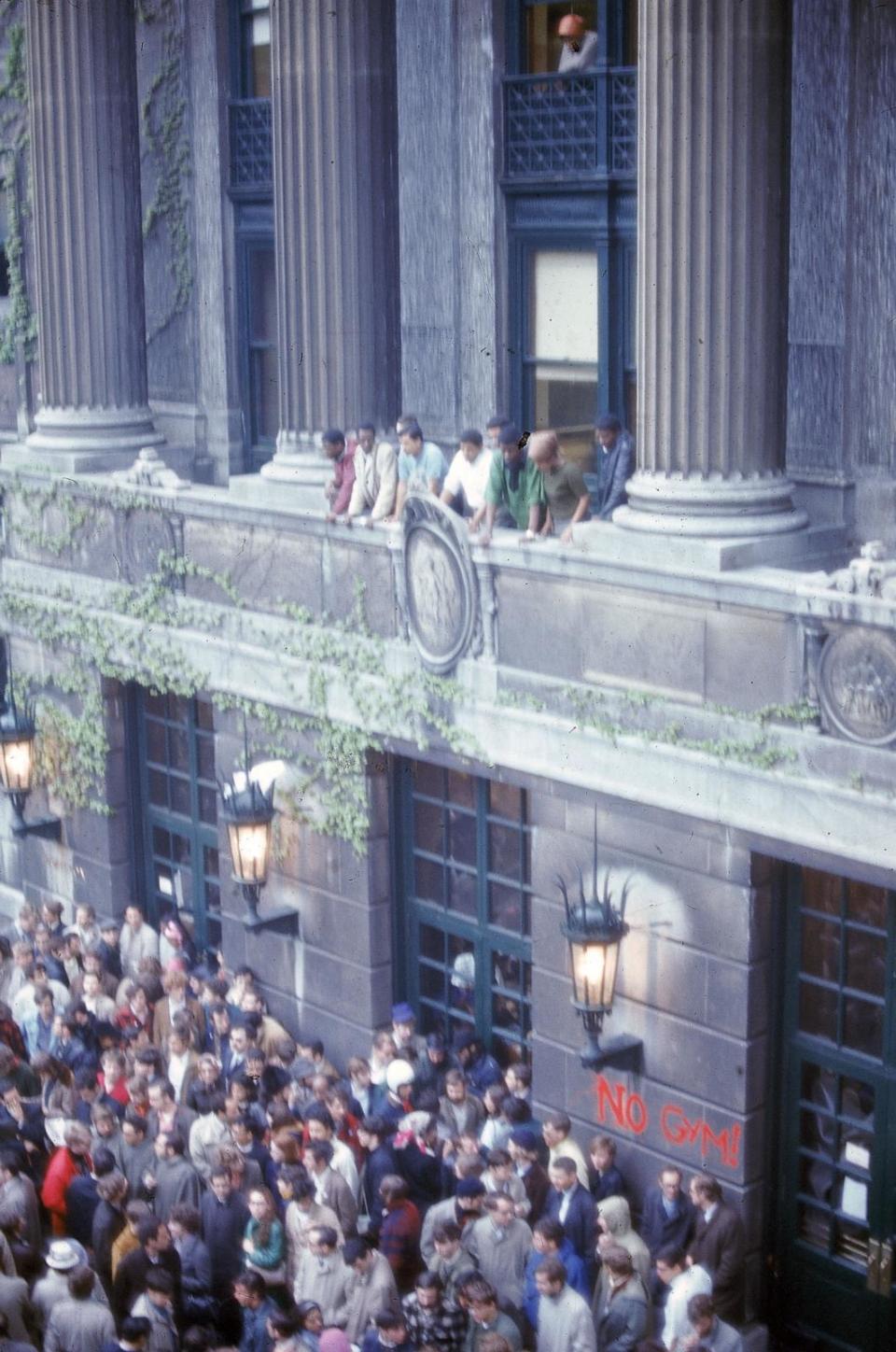
The Vietnam War
According to the Bill of Rights Institute, a civics nonprofit education center, colleges became the center of the anti-war effort in part because many colleges funded military-related research or allowed corporations with military contracts to recruit new employees on campus.
Ending military recruitment and cutting ties with controversial companies -- including Dow Chemical, which manufactured napalm, an incendiary weapon used in Vietnam -- were key concerns for student protesters.
Students for a Democratic Society became a national organization with tens of thousands of college student members around the country leading demonstrations.
President Richard Nixon promised to bring an end to the war in his campaign for the presidency. So when he announced that the war would be ongoing amid a 1970 U.S. invasion of Cambodia, protests erupted, according to Kent State University archives.
The Ohio National Guard was sent in to quell intensifying anti-war protests and anti-Nixon sentiment at the Kent State campus on May 1, 1970. The Ohio National Guard members fired into a crowd, killing four people and wounding nine students, according to Kent State.
The tragedy triggered a national student strike, forcing hundreds of colleges and universities to close.
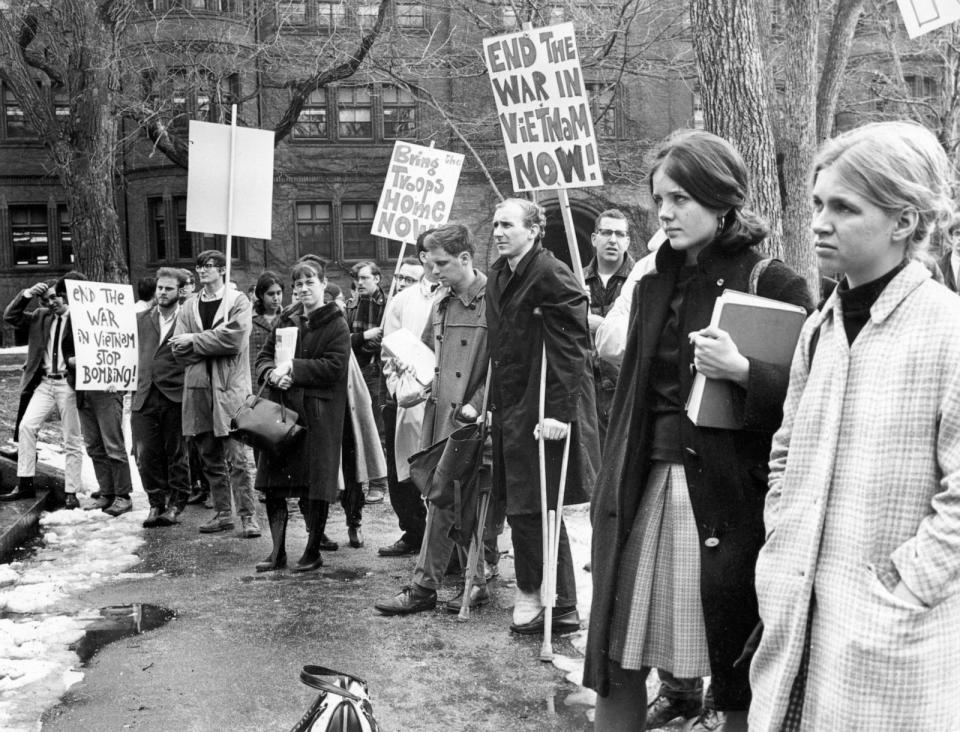
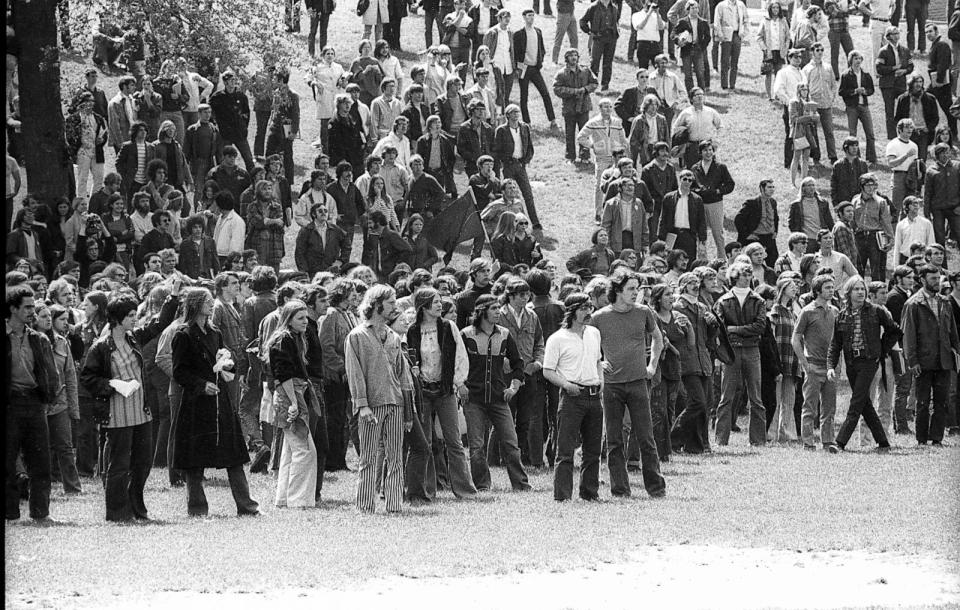
South African Apartheid
Born out of the protest strategies from the anti-Vietnam War and Civil Rights Movements, campus demonstrations in the 1970s and 1980s were launched nationwide against university investments in corporations tied to apartheid, the official racial segregation system in South Africa.
Across the country, students built encampments on campus to call for their universities to rescind investments, programs and assets that contribute to or benefit from apartheid.
Some built "shantytowns," according to a Daily Tar Heel student report in the 1980s, to highlight the living conditions of Black South Africans under apartheid.
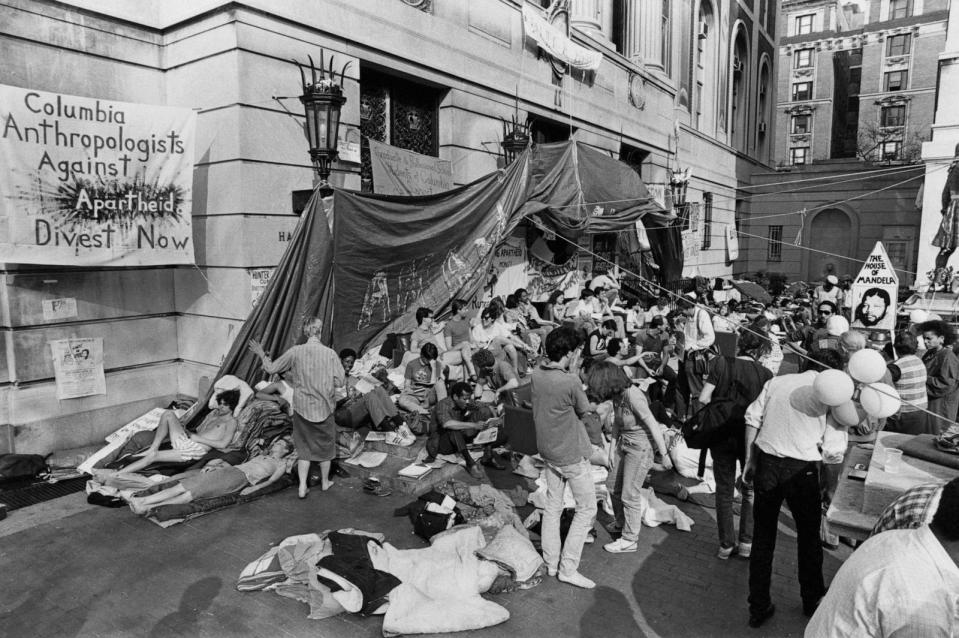
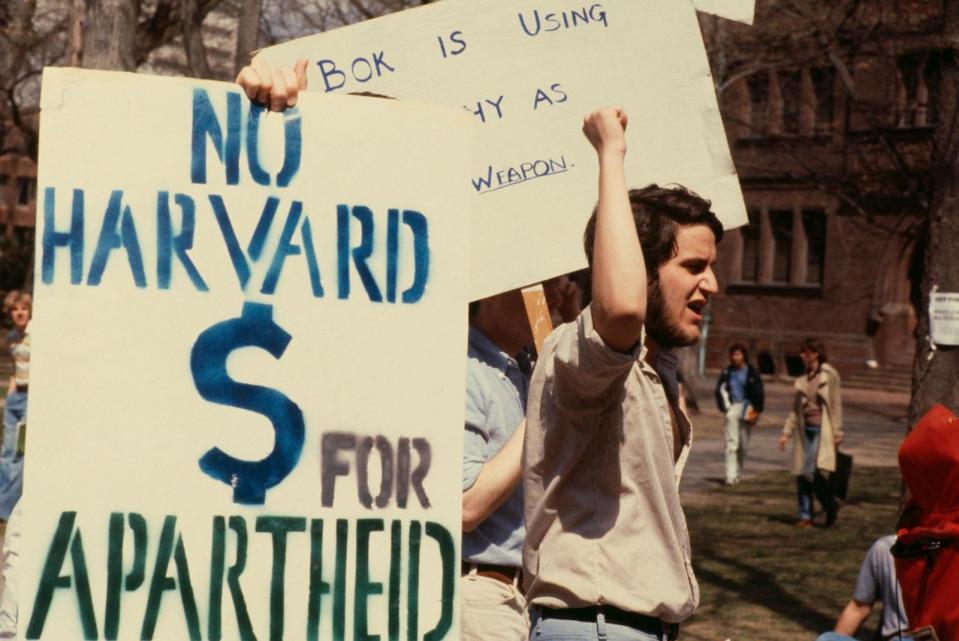
Dozens of universities answered the call, divesting in such corporations after years of demonstrations.
MORE: Campus protesters are demanding universities divest from Israel. Here's what that means.
The movement was one of the most successful divestment campaigns, with renowned South African anti-apartheid activist and Nobel Prize winner Desmond Tutu saying in 2002 that “there is no greater testament to the basic dignity of ordinary people everywhere than the divestment movement of the 1980s."
These moments in history are reflective in more modern advocacy work, including the Black Lives Matter movement, the Occupy Wall Street movement, and now the pro-Palestinian divestment movement.
How campus protests of the past may inform pro-Palestinian student demonstrations originally appeared on abcnews.go.com

 Yahoo News
Yahoo News 
